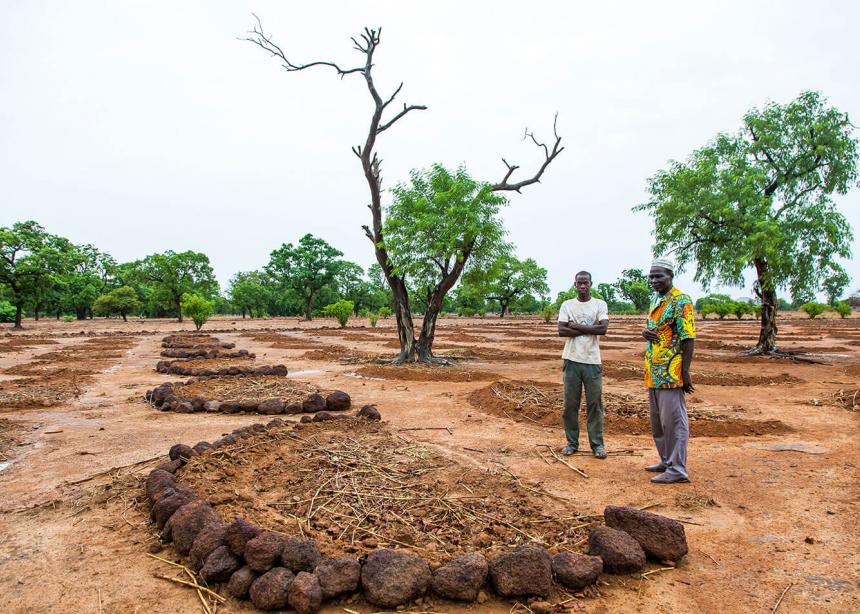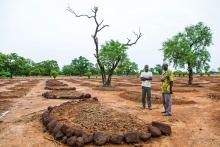Step into the fields of Etienne Tiendrébeogo (pictured at right in the bright shirt) in Yé, Burkina Faso, and you’ll notice something striking: large half-moon shapes dug into the soil, adding a fanciful touch to the dirt of his rural fields.
The result is anything but fanciful, however.
In Burkina Faso, rainfall is erratic, and without techniques like this, rain from a downpour would roll off the parched soil, leaving little nourishment for crops. But where half moons are dug, the water is held in place, giving it a chance to seep into the soil, where it will better nourish crops.
These half moons, combined with other new agricultural techniques Tiendrébeogo learned through the work of the Office of Development of Evangelical Churches (ODE), a Mennonite Central Committee (MCC) partner, have changed his life by increasing his crop yields.
To build half moons into a field, Tiendrébeogo follows these steps:
- Find the direction water will flow when it rains.
- Draw a four-metre line. Create a curved line connecting the two ends of the line. The curved side must be downhill from the straight side.
- Dig 15 to 30 centimetres deep in the soil inside the half moon.
- Pile the soil on the edge of the arc to a height of 5 to 10 cm. For extra support, put rocks on the curved edge.
- Put a pile of organic manure inside the half moon.
- Mix the manure into the soil.
- Plant seeds in the half moon after it rains.
When Tiendrébeogo first heard about half moons, he doubted they would work.
“But through our experience, we are delighted to use the new practices because everything went well and it did not cost any extra money,” he says. “Farmers don’t need chemical inputs because they can use organic fertilizers from their livestock. In the past, we used to sell food saved for our family to pay for school fees, which sometimes meant we did not have enough to eat.”
“Now I teach other farmers these techniques, even those who did not participate in the ODE training,” he says.




Comments
This is beautiful to see! And for others in arid regions to utilize themselves. Waffle gardening is maybe smaller scale but similar and what led me to this story. #permaculture
Add new comment
Canadian Mennonite invites comments and encourages constructive discussion about our content. Actual full names (first and last) are required. Comments are moderated and may be edited. They will not appear online until approved and will be posted during business hours. Some comments may be reproduced in print.